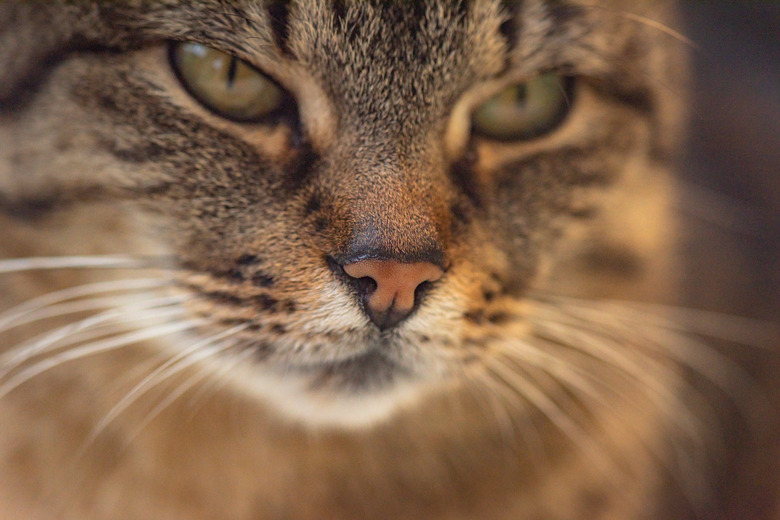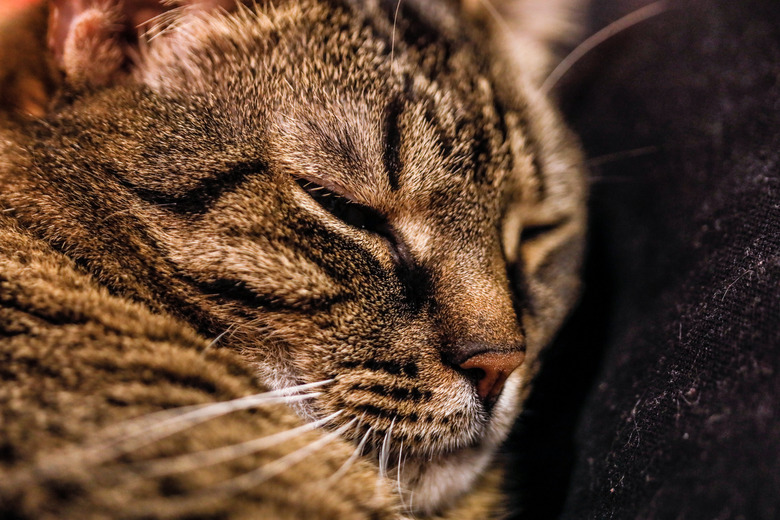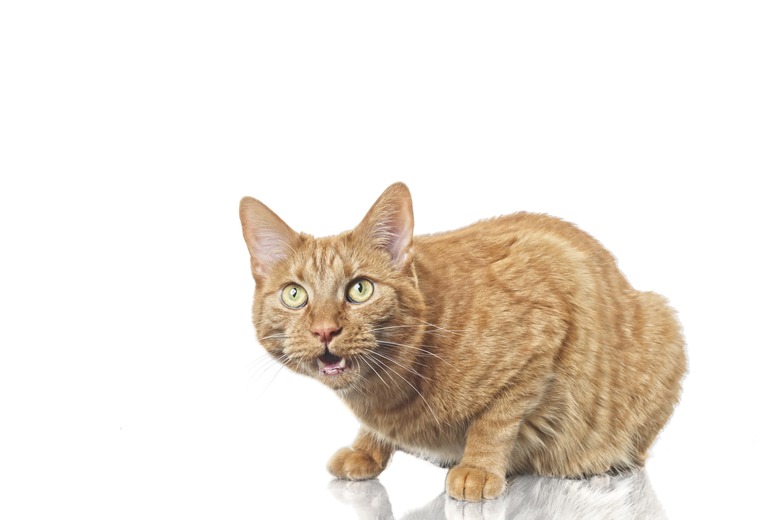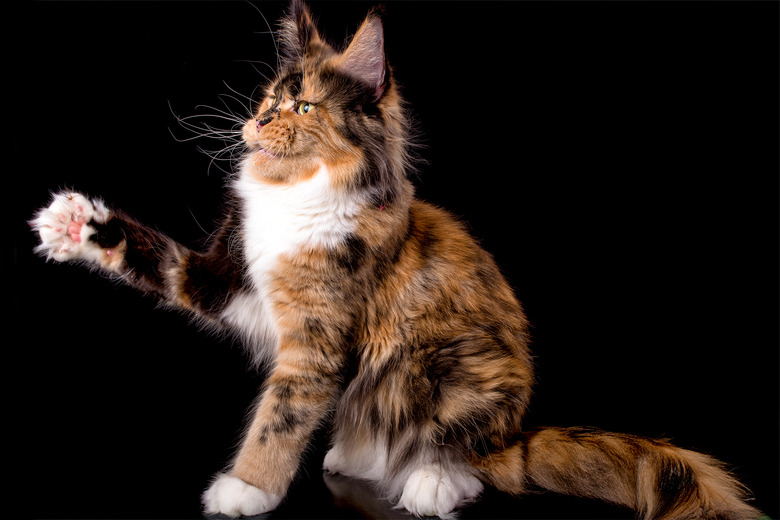11 Fascinating Facts About Your Cat's Whiskers
Lots of animals have "facial hair," so to speak. Animals like orangutans have hair that grows like human male hair traditionally does: all over the chin and cheeks. Goats, on the other hand, have more of a "goatee," in which the hair grows just from their chin. A cat's whiskers grow out from the cheek area. Cats also have long eyebrows that look just like whiskers.
Have you ever wondered if whiskers serve a purpose other than making your cat's face look extra cute? Turns out, they do. And there are a lot of other fascinating fun facts about whiskers too.
1. Whiskers can change color
1. Whiskers can change color
Whiskers can change color as a cat ages. A young cat may have white whiskers, which then darken or turn gray as a cat ages, similar to a human's hair. A pure black cat may have entirely black whiskers. If your cat has dark whiskers when they are young, they may turn gray or become lighter as your cat grows older.
2. Whiskers can be striped
2. Whiskers can be striped
A color gene, called the agouti gene, controls the color of whiskers. This gene also produces color variation such as banding (stripey) patterns in ordinary fur in some cats. Cats that have multiple colors in a pattern, such as tabbies and Abyssinian cats, are produced by this gene, because the gene can speed up and slow down release of pigment. Pigment delivery can switch halfway through the whisker growth cycle, leading to a stripe. It is even possible for cats to have both black and white whiskers.
3. Whiskers are highly sensitive
3. Whiskers are highly sensitive
Whiskers are much more than just hair, such as what grows out of a human's head. Whiskers are "tactile" hairs, also called "vibrissae," which are thicker, more deeply rooted, and more rich in nerve endings than normal hair. Whiskers can even help your cat "see" in the dark!
A cat has four rows of whiskers and most cats have a total of 12 on either side: The top two rows can move independently from the bottom two rows. The sensitive nerves in the whiskers help a cat determine the precise location, size and texture of an object it's encountered, even in the dark. Whiskers are also sensitive enough to detect changes in air currents, which is one reason why cats always seem to know when someone, or something, is approaching them.
4. Whiskers match the size of a cat's body
4. Whiskers match the size of a cat's body
The whiskers on a cat's muzzle grow to approximately equal to her body width. If he's hunting and wanting to follow a mouse under the house, for instance, he'll use his whiskers to judge whether his body will fit into the tunnel or hole or whatever he's encountered. If his whiskers brush the sides, he knows his body won't fit.
5. Whiskers communicate your cat's moods
5. Whiskers communicate your cat's moods
If you get to know the movements of a cat's whiskers, you can learn a lot about what your cat is feeling. When a cat's whiskers are relaxed, meaning simply sticking straight out as usual, your cat is content and happy. If her whiskers are pushed forward and maybe swishing back and forth, she's concentrating on something, likely hunting down what looks like a tasty morsel. If her whiskers are pulled back (you'll also notice other aggressive body language along with this) she's stressed, angry, or afraid.
6. Never cut your cat's whiskers!
6. Never cut your cat's whiskers!
Although the whiskers are attached to nerve endings, they can't actually feel themselves. This is similar to how it doesn't hurt if you clip your fingernails or cut your own hair. However, whiskers are sensitive enough to transmit as much information to your cat as your own fingertips do. For this reason, they should never be cut. If you're grooming your cat or just petting him, avoid his whiskers, because he needs them and it is likely to be uncomfortable.
7. Whiskers help a cat land on its feet
7. Whiskers help a cat land on its feet
The whiskers are attached to special sensory organs called proprioceptors. The proprioceptors send messages to the brain about where in space your cat's body is. This means the whiskers transmit information about what your cat's body is doing. This is part of the reason why cats are able to land on their feet.
8. Whiskers take up 40% of your cat's brain
8. Whiskers take up 40% of your cat's brain
Since cat vision is not all that great, they get most of their sensory information from touch and hearing. Almost 40% cat's brain maps to areas that are related to the location of whiskers. Each individual whisker maps to a specific spot in her brain, which makes them a super important part of your cat's anatomy.
9. Whiskers do grow back
9. Whiskers do grow back
Whiskers do occasionally fall out. A malicious child might pluck your cat's whiskers. Whiskers can grow scraggly and break. Never fear . . . they do grow back.
10. Whiskers are "little brooms"
10. Whiskers are "little brooms"
The word "whisker" comes from the Middle English word 'wisker' dating back to around the year 1600 that means "anything that whisks or sweeps." It makes sense, given the fun facts about whiskers that we have already learned.
11. Whiskers are not just on the face
11. Whiskers are not just on the face
As astonishing as whiskers are, perhaps the most surprising fun fact about whiskers that many people do not know is that whiskers are not jut found on a cat's face.
Yes, there are the whiskers around the mouth and the eyebrow whiskers. But that's not all! Cats also have whiskers on the back of their front legs just above the paws. These are called carpal whiskers and help with climbing as well as hunting.
Always check with your veterinarian before changing your pet's diet, medication, or physical activity routines. This information is not a substitute for a vet's opinion.
References
- I Heart Cats: 6 Fun Facts About Your Cat's Whiskers
- NY Times: Cats Whiskers
- LiveScience: Why Do Cats Have Whiskers
- Hartz: Why Cats Have Whiskers and How They Use Them
- VCA Hospitals: Why Do Cats Have Whiskers?
- Canidae: Why Is My Cat Losing His Whiskers
- Etymology Online: Whisker
- Canidae: 5 Fascinating Facts About A Cats Whiskers



